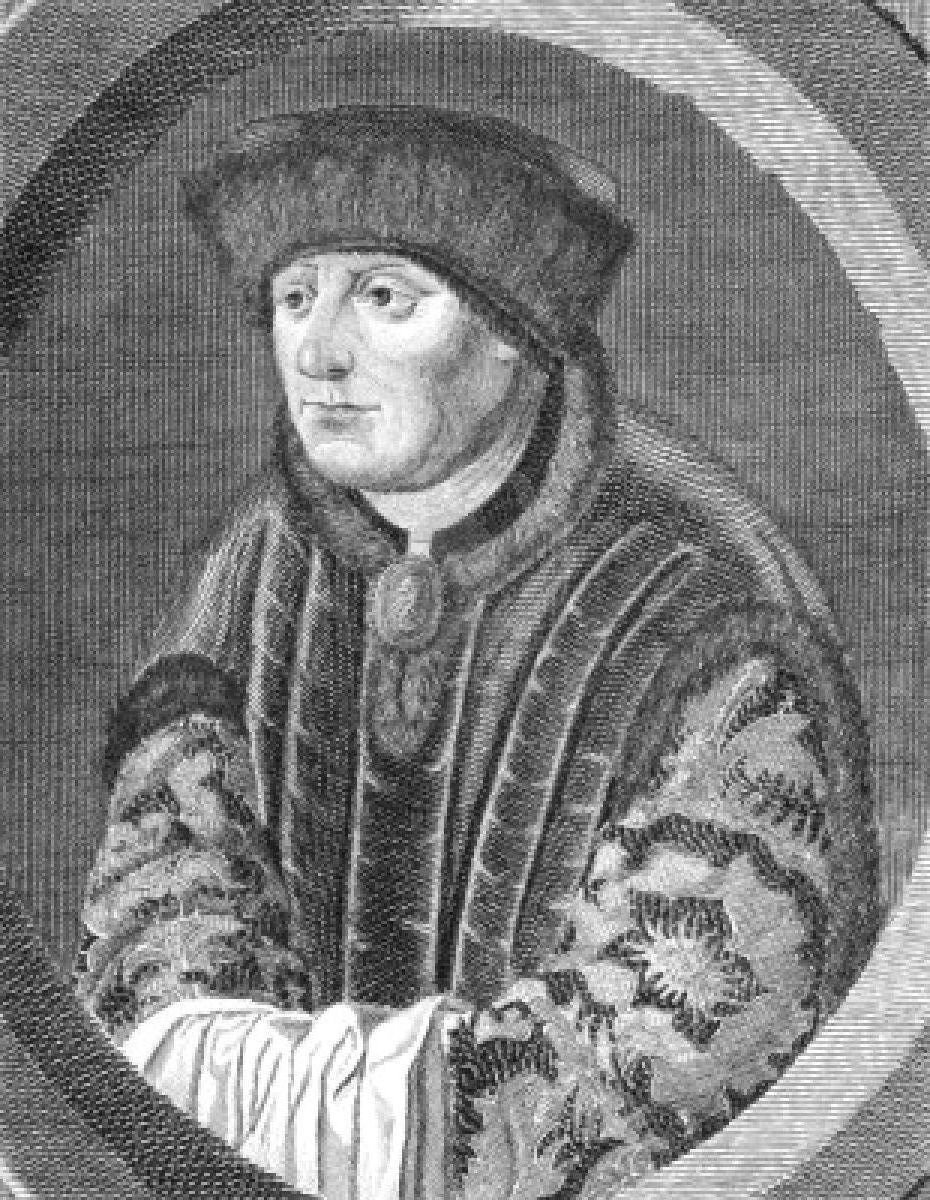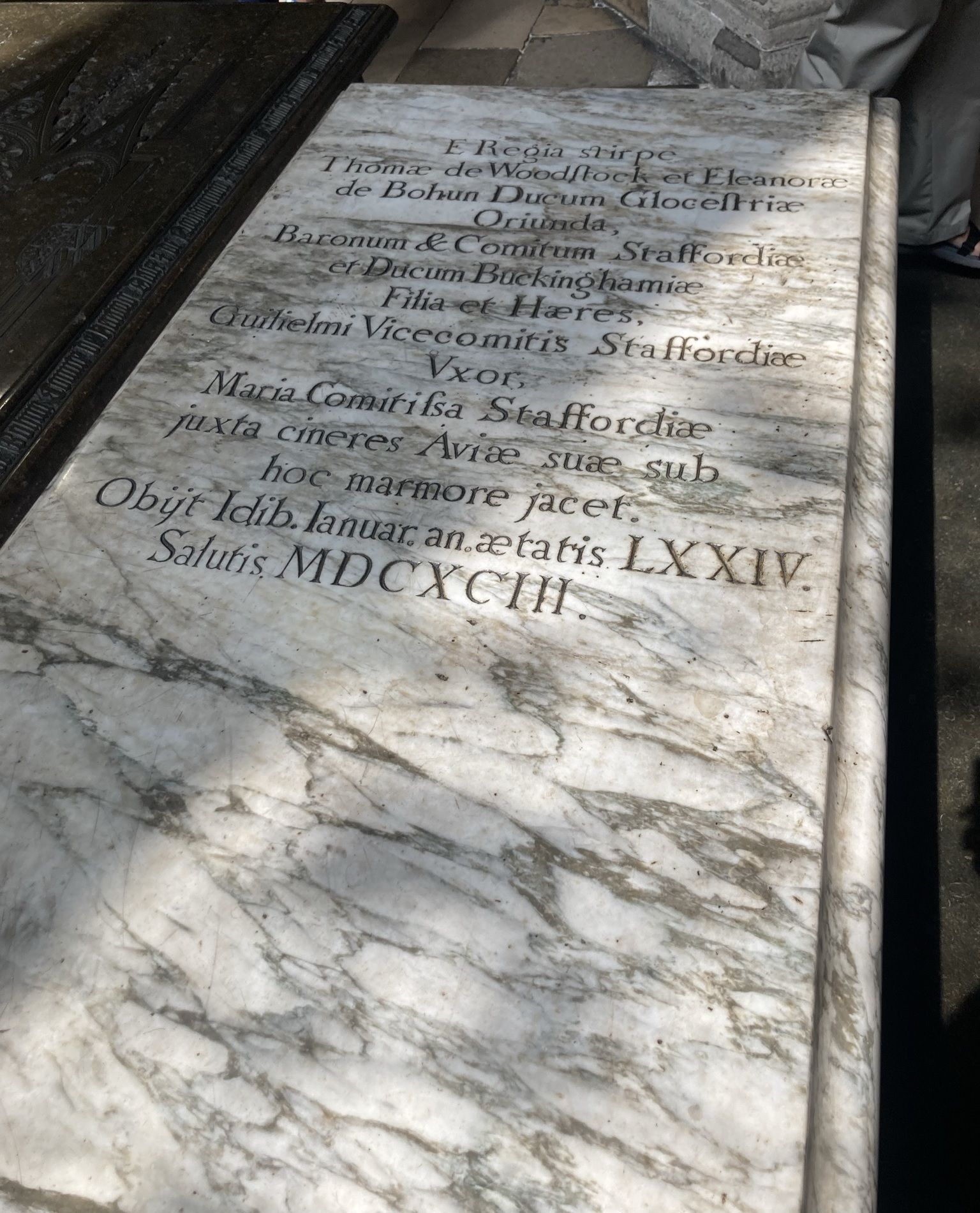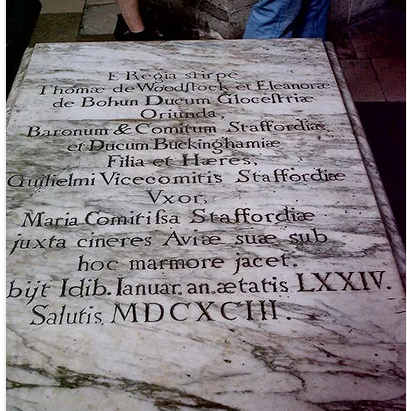He was considered a chivalrous and heroic military leader. As Earl of Buckingham, Thomas led an important military campaign against Brittany and its opponents against England's ally, John, Duke of Brittany. Back in England, he went on to put down a peasant revolt in Essex, and then fight the Scots. In an undated letter to his nephew Richard II, Thomas laid down the text of a treatise he wrote on "the manner of conducting judicial duels."
Thomas became disgusted with his nephew, criticizing"the slackness of our leader the King, who has just allied himself by marriage with his principal enemy. That's hardly a sign that he wants to fight him. No, he's too fat in the arse and only interested in eating and drinking. That's no life for a fighting man, who ought to be hard and lean and bent on glory." Becoming an outspoken and powerful opponent of Richard II, Thomas was responsible for the execution of a number of the king's friends and allies. It was not a petty quarrel, and it had far-reaching effects on the life and reign of Richard II, producing a chain of events leading to the Wars of the Roses.
He became leader of the Lords Appellant, a group of nobles trying to take power from Richard. A rebellion in 1388 weakened the King's power, but Richard was able to dispose of the Lords Appellant in 1397. For his part, Thomas was imprisoned in Calais to await trial for treason. Before he ever went to trial, he was murdered in September of 1397, probably on the orders of King Richard.
Despite conflicting orders as to the disposition of the body, Thomas of Woodstock was eventually buried in Westminster Abbey, not in the royal burial place, but in the south of the church at the Chapel of St. Edmund. The body was later moved to the Chapel of the Kings near the shrine of St. Edward.
References:
Encyclopedia Britannica, 11th ed., Vol. XII, Cambridge: Cambridge University Press, 1910, 131.
The Monarchs of England by Jean Morris, New York: Charterhouse, 1975, 107.
Britain's Royal Family: A Complete Genealogy, by Alison Weir, London, U.K.: The Bodley Head, 1999, 113,115.
The Complete Peerage of England, Scotland, Ireland, Great Britain and the United Kingdom, Extant, Extinct or Dormant, by G.E. Cokayne et al; new ed., Gloucester, U.K.: Alan Sutton Publ., 2000, Vol. I, 357; Vol. II, 388.
He was considered a chivalrous and heroic military leader. As Earl of Buckingham, Thomas led an important military campaign against Brittany and its opponents against England's ally, John, Duke of Brittany. Back in England, he went on to put down a peasant revolt in Essex, and then fight the Scots. In an undated letter to his nephew Richard II, Thomas laid down the text of a treatise he wrote on "the manner of conducting judicial duels."
Thomas became disgusted with his nephew, criticizing"the slackness of our leader the King, who has just allied himself by marriage with his principal enemy. That's hardly a sign that he wants to fight him. No, he's too fat in the arse and only interested in eating and drinking. That's no life for a fighting man, who ought to be hard and lean and bent on glory." Becoming an outspoken and powerful opponent of Richard II, Thomas was responsible for the execution of a number of the king's friends and allies. It was not a petty quarrel, and it had far-reaching effects on the life and reign of Richard II, producing a chain of events leading to the Wars of the Roses.
He became leader of the Lords Appellant, a group of nobles trying to take power from Richard. A rebellion in 1388 weakened the King's power, but Richard was able to dispose of the Lords Appellant in 1397. For his part, Thomas was imprisoned in Calais to await trial for treason. Before he ever went to trial, he was murdered in September of 1397, probably on the orders of King Richard.
Despite conflicting orders as to the disposition of the body, Thomas of Woodstock was eventually buried in Westminster Abbey, not in the royal burial place, but in the south of the church at the Chapel of St. Edmund. The body was later moved to the Chapel of the Kings near the shrine of St. Edward.
References:
Encyclopedia Britannica, 11th ed., Vol. XII, Cambridge: Cambridge University Press, 1910, 131.
The Monarchs of England by Jean Morris, New York: Charterhouse, 1975, 107.
Britain's Royal Family: A Complete Genealogy, by Alison Weir, London, U.K.: The Bodley Head, 1999, 113,115.
The Complete Peerage of England, Scotland, Ireland, Great Britain and the United Kingdom, Extant, Extinct or Dormant, by G.E. Cokayne et al; new ed., Gloucester, U.K.: Alan Sutton Publ., 2000, Vol. I, 357; Vol. II, 388.
Family Members
-
![]()
Edward "The Black Prince" Plantagenet
1330–1376
-
Lady Isabel Plantagenet de Coucy
1332–1382
-
![]()
Joan Plantagenet
1334–1348
-
![]()
Prince William Of Hatfield
1336–1337
-
![]()
Lionel "Duke of Clarence" Plantagenet
1338–1368
-
![]()
John of Gaunt
1340–1399
-
![]()
Sir Edmund of Langley
1341–1402
-
![]()
Lady Blanche de la Tour Plantagenet
1342–1342
-
![]()
Mary de Waltham
1344–1362
-
![]()
Margaret De "Lady of Pembroke" Plantagenet de Hastings
1346–1361
-
![]()
William de Windsor
1348–1348
Advertisement
Advertisement




















